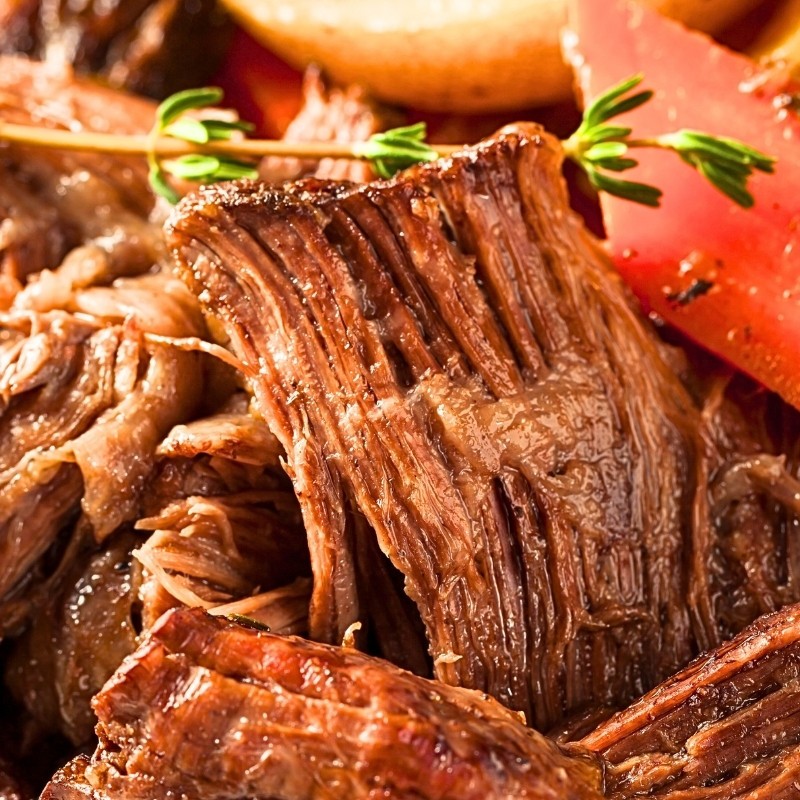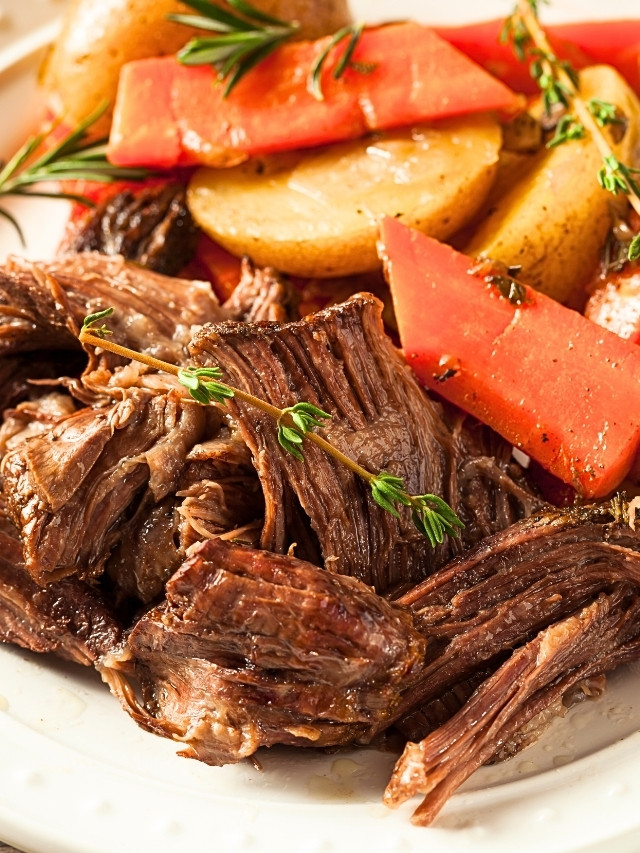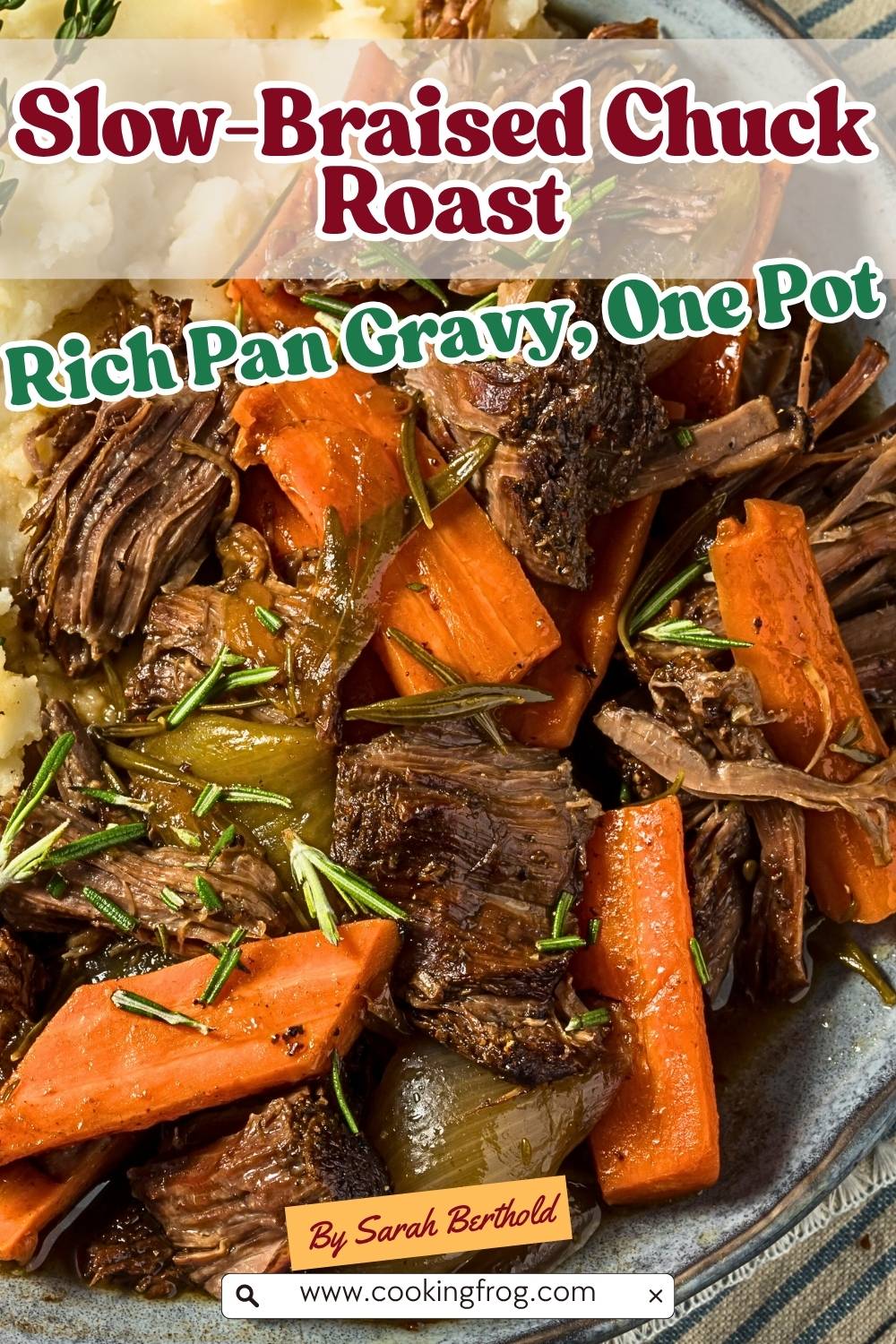A braised chuck roast is the kind of dinner that makes the whole home feel cozy. This Dutch oven pot roast simmers low and slow with onions, carrots, garlic, and a handful of fresh herbs until the beef turns fork-tender and the pan sauce becomes silky and rich.
New potatoes go in for the final stretch so they soak up all that flavor—no extra sides required. It’s a simple, one-pot routine with big payoff: sear for color, deglaze for depth, then let the oven do the work while you set the table.
Ingredients
-
3 lb chuck roast, patted dry
-
Kosher salt & freshly cracked black pepper
-
1 Tbsp olive oil (or neutral oil)
-
2 carrots, roughly chopped
-
2 celery stalks, roughly chopped
-
1 yellow onion, roughly chopped
-
1 head garlic, cloves peeled (or 2 if you love garlic)
-
2 Tbsp tomato paste
-
1 cup dry red wine
-
2 cups low-sodium beef stock
-
Fresh herbs: a few sprigs rosemary & thyme, 2–3 sage leaves, 1–2 bay leaves, handful of parsley stems
-
1 lb new potatoes, halved if large
Optional flavor boosts (choose 1–2): 1 Tbsp Worcestershire or soy sauce; 1 tsp balsamic vinegar.
Instructions
-
Season & preheat
Pull the roast from the fridge 20–30 minutes ahead. Season all sides very generously with salt and pepper. Preheat oven to 325°F / 160°C. -
Sear the beef
Heat a large oven-safe pot (Dutch oven) over medium-high. Add oil, then sear the roast 3–4 minutes per side until deeply browned. Transfer to a plate. -
Build the base
Lower heat to medium. Add carrots, celery, onion, and garlic with a pinch of salt. Cook 5–6 minutes, stirring, until lightly caramelized. -
Tomato paste = umami
Stir in tomato paste and cook 2–3 minutes until it turns brick-red and smells sweet. -
Deglaze & reduce
Pour in the wine. Scrape up the browned bits. Simmer 3–5 minutes to reduce by about half. -
Braise
Return the roast (and any juices) to the pot. Add stock to come ½–⅔ up the sides of the meat. Tuck in the herb bundle (tie with twine if you can). Cover and bake 3 hours. -
Add potatoes
Carefully remove the lid, nestle potatoes around the roast, re-cover, and cook 1 hour more, until the beef is fork-tender and potatoes are creamy. -
Finish the sauce
Transfer meat and potatoes to a platter to rest 10–15 minutes (tent with foil). Skim fat from the pot. If you want a thicker sauce, simmer 5–10 minutes uncovered until glossy. Season to taste (salt, pepper, splash of balsamic or Worcestershire if needed). -
Serve
Slice or gently shred the beef. Spoon the pan sauce over the meat and potatoes. Scatter chopped parsley.
Tips for Success
-
Go heavy on salt upfront. Big cuts need more seasoning than you think.
-
Color = flavor. Take time to get a deep sear; it pays off in the sauce.
-
Liquid level matters. You’re braising, not boiling—keep it below the top of the roast.
-
Rest before slicing. Juices redistribute and the meat stays succulent.
This is the pot roast you’ll get asked for by name—save it before you forget.
Variations & Swaps
-
No wine? Use extra stock plus 1 Tbsp balsamic or 1 tsp soy/Worcestershire for depth.
-
Different potatoes: Fingerlings or Yukon Golds hold up best.
-
Herb swap: If you’re out of sage/rosemary, thyme + bay still carries the dish.
-
Veg add-ins: Chunked parsnips or mushrooms can go in with the potatoes.
Make Ahead, Storage & Reheating
-
Make ahead: Even better the next day. Chill, then lift off the chilled fat cap and reheat gently.
-
Fridge: Up to 4 days in an airtight container.
-
Freezer: Up to 3 months (slice first and cover in sauce).
-
Reheat: Simmer gently on the stovetop or cover and warm in a 300°F / 150°C oven until hot.
Alternate Methods
-
Slow Cooker: Sear in a skillet, then transfer everything to the slow cooker. Cook 8–9 hours on LOW (add potatoes for the last 2–3 hours).
-
Instant Pot: Sear on Sauté, deglaze with wine, add stock/herbs, pressure cook 60–70 minutes (natural release 15 minutes). Cook potatoes separately or in a steamer basket for 4–6 minutes after removing the beef.
FAQ
Can I use a different cut?
Yes—brisket or blade roast work well; plan for similar times until fork-tender.
How do I know it’s done?
It should shred with a fork. If using a thermometer, you’ll see collagen break down around 200°F / 93°C internal, but tenderness is the real test.
Too thin/too salty sauce?
Reduce to thicken. If salty, add a knob of unsalted butter, a splash of water/stock, or a pinch of sugar to balance.




